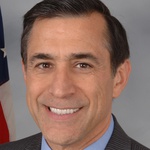Commentary: Crafting 21st Century IT Reform
Agencies spend nearly half of their technology budgets maintaining obsolete or deficient systems.
The federal government currently spends $81 billion each year on information technology, yet its use and deployment of IT is full of duplication and failure. At a time when we are facing record deficits and our national debt has exceeded GDP, it has never been more important for government IT acquisition to maximize the American taxpayer’s return on investment, reduce operational risk and provide value to citizens. Yet, because of the antiquated way the government defines its requirements and acquires IT, we are wasting billions of taxpayer dollars each year on failed programs.
Sixteen years after the seminal Clinger-Cohen legislation laid the foundation for the federal government’s acquisition and management of IT and 10 years after the E-Government Act established a federal chief information officer, program failure rates and cost overruns still plague between 72 percent and 80 percent of large federal IT programs, according to industry estimates. Federal managers say that 47 percent of their budget goes to maintain obsolete and deficient IT resources. Estimates suggest that the cost to the taxpayer is as high as $20 billion wasted each year.
We can reverse our dismal record by overhauling the cumbersome federal acquisition process and adopting best practices from the private sector. Over the past few months, I have been drafting IT acquisition reform legislation, and today, to solicit input from all stakeholders, I am posting a discussion draft of the legislation online here at http://oversight.house.gov.
The draft legislation would give agency CIOs effective budget authority over IT programs and put the CIO Council in charge of developing shared services and shared platforms. It also would encourage a broader transition to cloud solutions, make it easier for agencies to embrace the use of open source software, open up federal websites and data for the development of complimentary apps, and support faster data center optimization.
The draft legislation would break down the silos that constitute the heart of waste and duplication in federal IT. It establishes a Federal Commodity IT Center to serve as a focal point for coordinated acquisition practices and the management of government-wide IT contracts.
To allow agencies to focus on acquiring technology that best serves their mission, the draft bill would designate certain agencies as the go-to centers for complex IT acquisition for other federal agencies, offering streamlined contracts and technical expertise. If the Veterans Affairs and Health and Human Services departments deal with healthcare IT procurement on a regular basis, why should other agencies not benefit from their expertise? These Assisted Acquisition Centers of Excellence would centralize the knowledge of specialists mitigating the critical shortage of skilled federal IT acquisition staff.
Successfully implemented, the legislation would aggregate demand among the federal agencies to get the best price for the taxpayer, develop IT acquisition subject-matter experts to help other agencies buy things cheaper, faster, and smarter, and eliminate unnecessary duplication of IT contracts.
Accomplishing major reform will not be easy, but streamlining our obsolete approach to federal IT is essential to providing a better value for the American taxpayer dollar.
Rep. Darrell Issa, R-Calif., is chairman of the House Committee on Oversight and Government Reform.






